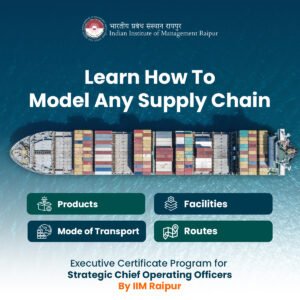In the realm of statistical analysis, two powerful tools often stand out: Analysis of Variance (ANOVA) and Regression Analysis. These techniques are essential for understanding relationships within datasets and making educated decisions based on data.
Prior to embarking on the enlightening journey of regression analysis, it is paramount to embark on a quest, one that beckons you to explore the fundamental prerequisites of your data. In this ritual of inquiry, you will traverse the realms of linearity, independence, normality, and homoscedasticity – four sentinels guarding the gates to the realm of statistical insights.
But how do they differ, and when should you use one over the other? In this post, we will explore the Distinguishing ANOVA and Regression Analysis, helping you make informed choices in your data analysis endeavors.
Overview of ANOVA
These sacred assumptions serve as the compass, steering your model on the path of righteousness, ensuring that your estimations are virtuous, unbiased, and unwavering. To scrutinize these assumptions, we wield an arsenal of diagnostic tools – the sorcerer’s scrolls in our data wizardry. Behold the scatterplots, the residual plots, the enigmatic Q-Q plots, and the sacred tests of significance. These tools, like oracles of old, reveal the truth about your data’s conformity to the sacred assumptions.
Yet, should the auguries foretell any deviation, fear not, for in the realm of statistics, there exists the art of transformation. You may metamorphose your data, banish the outliers, or seek refuge in an alternate form of regression. The path may twist and turn, but with diligence, we shall reach the heart of statistical enlightenment.
What is ANOVA?
Analysis of Variance is a statistical method used to analyze and compare the means of multiple groups or populations. It helps in determining whether the variances between these groups are statistically significant or if they could have occurred by chance.
ANOVA, this statistical maestro, orchestrates a breathtaking performance, elegantly partitioning the observed tapestry of variation into two distinct threads: systematic and random.
In this mesmerizing ballet of data, the systematic factors waltz with grace, their presence bearing statistical significance, painting the canvas of our dataset with their distinctive brushstrokes. Meanwhile, the random factors blend into the background, their presence a mere whisper, barely a ripple in the grand symphony.

When to Use ANOVA?
- Comparing Multiple Groups: ANOVA is the go-to choice when you need to compare the means of more than two groups. It’s suitable for scenarios with categorical independent variables and continuous dependent variables.
- Testing for Differences: Use ANOVA to test if there are statistically major differences between the groups, such as comparing the performance of various product versions or the effects of different treatments on patients.
- ANOVA Assumptions: Before employing this technique, confirm that the normal distribution and homogeneity of variances, which are fundamental assumptions of ANOVA, are satisfied.
Overview of Regression
-
What is Regression Analysis?
It is a statistical method for modeling the relationship between a dependent variable and one or more independent variables. It helps in understanding how changes in the independent variables affect the dependent variable.
Regression analysis serves as a mathematical compass, guiding us through the labyrinth of variables, revealing which ones truly wield influence. It dances with queries that awaken curiosity: What holds the most sway? Which elements can be casually dismissed? How do these pieces of the puzzle engage in their intricate pas de deux? And, perhaps most tempting, how firmly can we tether our trust to this ensemble of factors?
When to Use Regression?
- Predicting Outcomes: When you need to estimate the value of a dependent variable based on the values of independent variables, regression is the best option.
- Quantifying Relationships: It helps quantify the strength and direction of relationships between variables. Linear regression, for instance, can show if there’s a positive or negative correlation.
- Understanding Causality: While regression can reveal associations, it’s important to note that it doesn’t establish Causality. It can only help identify relationships between variables.
How to Choose Between ANOVA and Regression?
Once you’ve meticulously crafted a regression model that aligns with the sacred assumptions, navigating the treacherous waters of multicollinearity and confounding, a new quest unfolds. It’s a quest of discovery, a journey to unveil the model’s compatibility with your data and its prowess to transcend the boundaries of familiarity into the realm of the unknown.
Key Differences Between ANOVA vs Regression Analysis:
-
Data Type
- ANOVA: Use ANOVA when dealing with categorical independent variables and continuous dependent variables.
- Regression: Choose regression when you have one or more continuous independent variables and a continuous dependent variable.
-
Research Objective
- ANOVA: Opt for ANOVA when your primary goal is to compare means across multiple groups.
- Regression: Select regression when you want to predict, model, or analyze the relationship between variables.
-
Assumptions
- ANOVA: Ensure that your data meets the assumptions of ANOVA, such as normal distribution and homogeneity of variances.
- Regression: Check for assumptions like linearity, independence, and homoscedasticity, depending on the regression type.
-
Number of Variables
- ANOVA: Useful when you are comparing more than two groups.
- Regression: Appropriate when you are working with one or more independent variables.
-
Causality vs. Association
- ANOVA: Focuses on identifying differences between groups but does not establish Causality.
- Regression: Helps quantify associations but does not prove causation.
-
Complexity
- ANOVA: Simpler to execute and interpret when comparing multiple groups.
- Regression: This may involve more variables and complex relationships, making it suitable for predictive modeling.
The Final Words
In summary, ANOVA and Regression are both valuable data modeling techniques that serve different purposes in data analysis. ANOVA is your choice when comparing means across multiple groups with categorical independent variables. Regression, on the other hand, excels in predicting outcomes and modeling relationships between variables, especially when dealing with continuous independent variables.
Selecting the right data analysis tools in 2024 depends on the nature of your data, your research objectives, and the underlying assumptions of each method. By understanding these differences, you can make informed decisions and gain valuable insights from your data analysis, making your research more effective and meaningful.
IIM Raipur, in collaboration with Imarticus Learning, presents an exclusive executive certificate program tailored for visionary Chief Operations Officers. This COO Training Program is your gateway to spearheading a revolutionary era of strategic leadership, enabling you to acquire the essential strategic, operational, personal, and technological competencies over an immersive 10-month journey.
Within this comprehensive Chief Operating Officer certification, you’ll find over 150 hours of interactive sessions meticulously crafted and guided by the seasoned faculty of IIM Raipur. This is not just a certification; it’s a transformative voyage that will empower you with the skills and insights vital for the realm of strategic COOs, propelling you towards coveted C-suite positions.

